The Black Circle @ Media Impact @ 4th Moscow Biennale
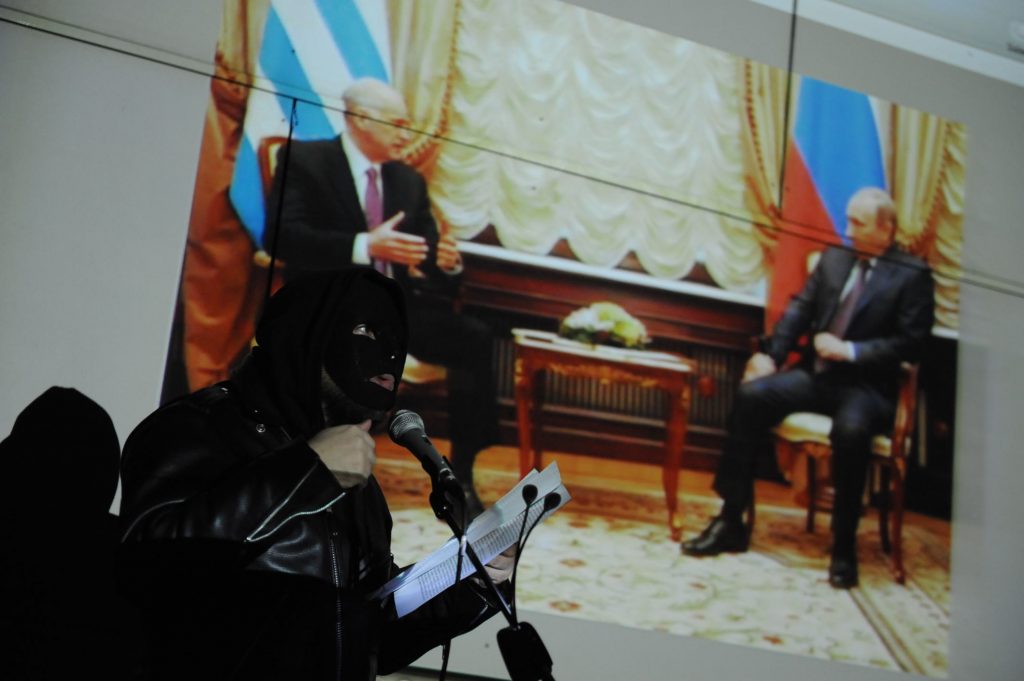
Kostis Stafylakis and Vana Kostayola perform The Black Circle : The Moscow Declaration and the Crusade of the Blond Genus
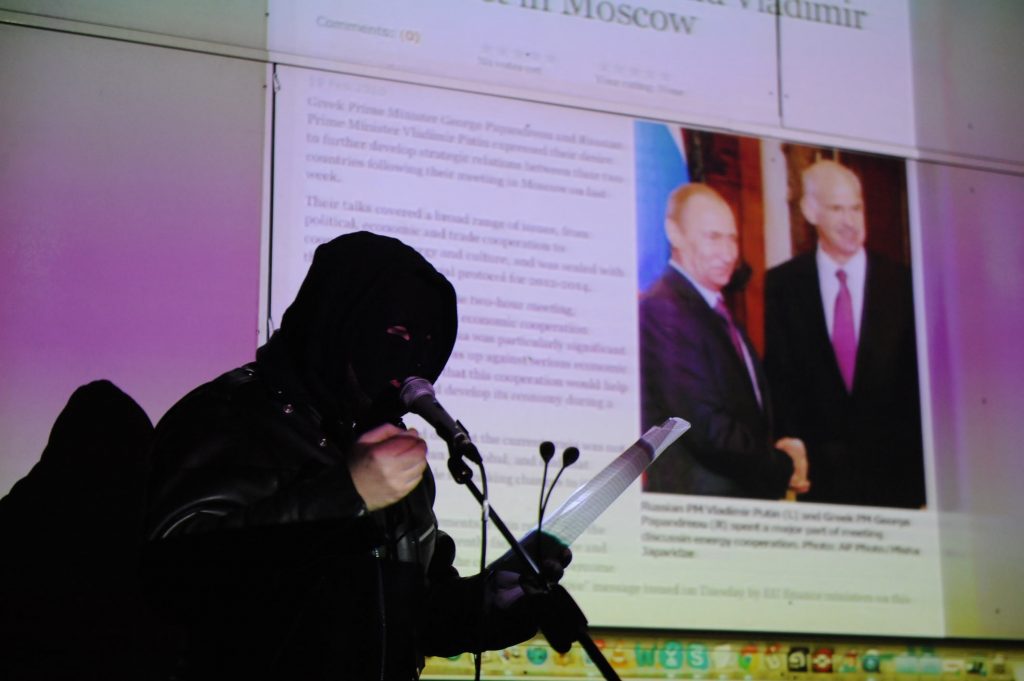
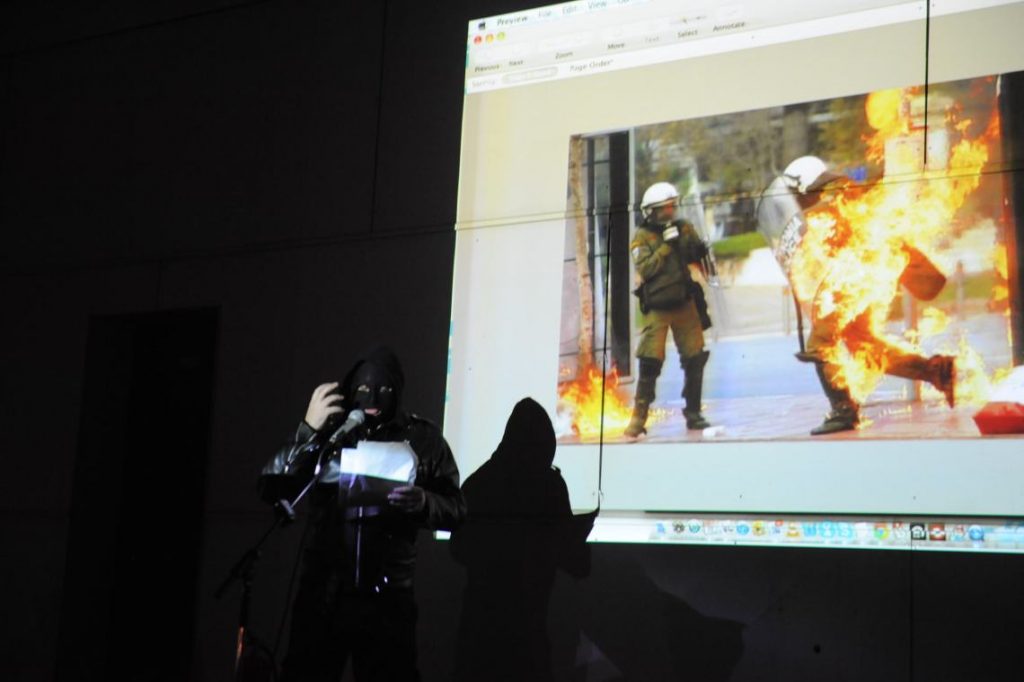
Performance and Documentary Video Installation at Media Impact: International Festival of Activist Art (curated by Tania Volcova), part of the 4th Moscow Biennale (curated by Peter Weibel), 2011.
The Black Circle (2009-2013) is a SAGA by Kostis Stafylakis & Vana Kostayola focusing on the emergence and silent proliferation of ideas of alternative fascism in the post-2008 Greece. In the aftermath of the 2008 social uprising, that was triggered by the murder of the young Alexis Grigoropoulos by a police officer, and signaled the start of an immense crisis, Stafylakis and Kostayola noticed the sudden, yet disguised, emergence of radicalist groups belonging to the fringe space known as Third-Positionism (Autonomous Nationalism, Radical Traditionalism, National Anarchism and so on). Around 2009, KavecS started working on the Black Circle project: an awkward and alerting simulation of local Third-Positionist groups that appeared to propagate crypto-fascist ideas either on the blogosphere or through actual street activism. By drawing on the online material that was discovered at the webpages of groups such as the Black Lilly, KavecS produced a variety of performances that mimicked the style of their discourse, online aesthetics, and masculinist posture. In certain cases, Greek Autonomous nationalists would raid Athenian social spaces wearing Guy Fawkes masks. The Black Circle’s post-digital performances, spanning from online research to physical declarations, were rants mimicking the eclectic and, eventually, poisonous content of these masqueraded right-wing extremists.
. At Moscow, the Black Circle recited prophecies that the Blond Genus (Russians) would conquer Istanbul and reinstate the Byzantine Empire. At the time, such nationalist fantasies were very popular in Greece due to the cult around a monk called Father Paissios, who supposedly prophetized the “Third Rome”.
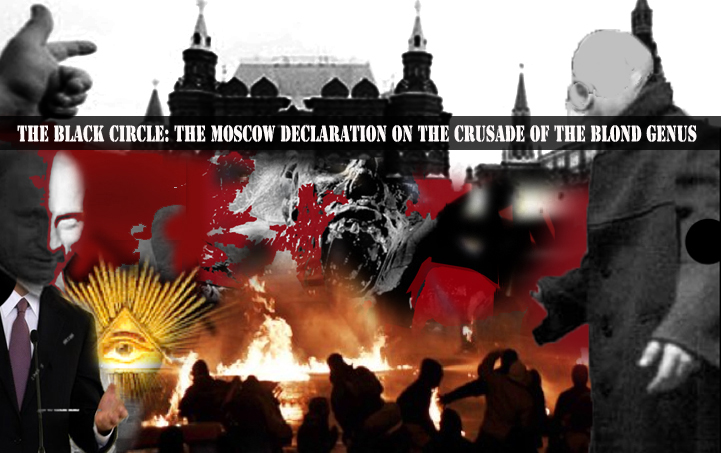
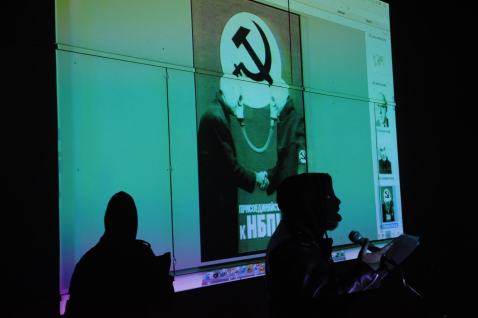

From Peter Weibel’s rant on the participation of The Black Circle in the Media Impact Festival:
‘I was impressed, very impressed. Because he shows for the first time and correctly that anarchists can be right-wing fascists. And showed this tradition from Leo Strauss to Evola. It is an important contribution. Joseph Beuys does fit into this right-wing anarchism model. When you examine his writings, you realize his romantic anarchism becomes concomitantly very right-wing anarchism. In Germany the Green Party in the beginning had two trends: one was the green and left, the other one was the right-wing green. There was a big debate in Germany about the Green Party. And Beuys was part of the right-wing tendency. So he was not allowed to enter the Green Party because at that time all these left people dominated the Green Party, and they said “No, we don’t want Joseph Beuys, because he’s from the right-wing Green Party.”
And as an artist, he is different from Santiago Sierra. Because Santiago Sierra just repeats the action, Kostis does the opposite. He does what I call re-enactment, so you re-enact something that really means you see something in the media, you re-enact it and see it again. So you keep the ontological difference with reality the way the Learning Film Group did this too. It is the right direction to go in our imformation age, re-enact, but not repeat reality, like the Learning Film Group in the Moscow Biennale 4 did it with the Grenelle Agreements…’
From Presentation of the book “IO++ Program Texts for Possible Wolds” by Peter Weibel, in Media Impact: International Festival of Activist Art, 24 September – 10 October 2011 Moscow, edited by Tatiana Volkova, ZKM Publications, Moscow 2011, pp. 67-68.
Watch an overview of the Black Circle performances:

